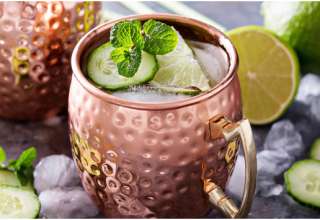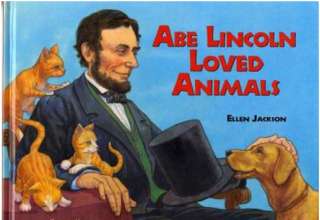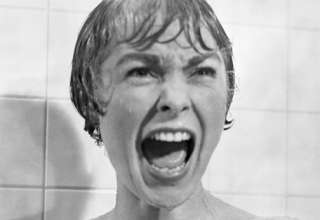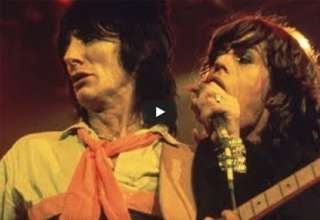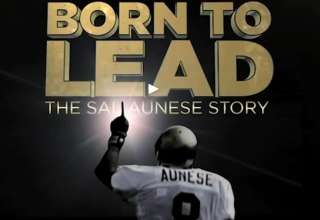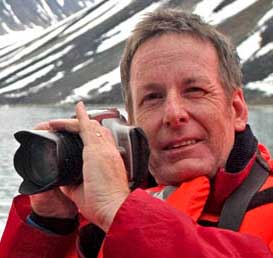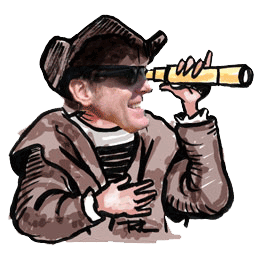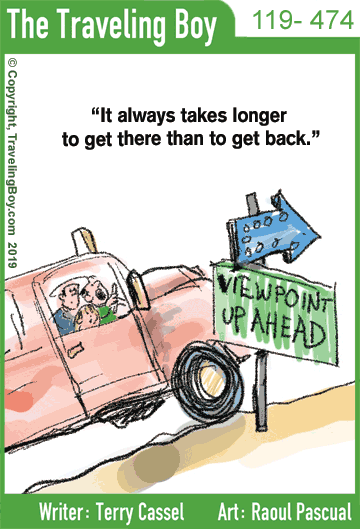The Magical Mystery Tour – A Fab Beatle Experience in Liverpool
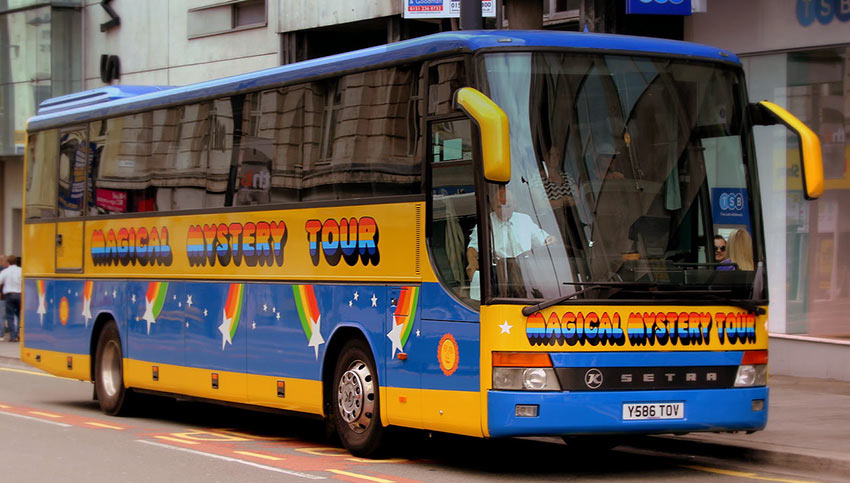
The Magical Mystery Tour of Liverpool is the ultimate Beatle experience for the ultimate Beatle fanatic, and if you fit that description, it is well worth the journey. The tour introduces you to over thirty places directly associated with the Beatles and those people who were close to them.
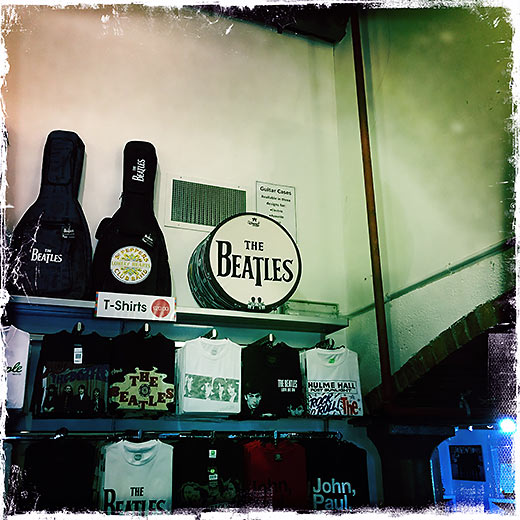
Tickets are purchased at the Beatles Story Museum at the renovated Albert Dock, on the River Mersey. If you have the time, the museum offers a good Beatles primer before you get on the bus. Full of memorabilia, rare photographs and interactive exhibits, it covers the lads’ beginnings to their rise to stardom and eventual departure from Liverpool.
Ticket to Ride
Participants board one of the company’s fleet of three yellow psychedelic Magical Mystery Tour coaches identical to the bus used in the 1967 BBC film “Magical Mystery Tour.” A team of professional tour guides who are all expert Beatle historians conduct the two and a half-hour journey. And each of them seems to have their own personal story and relationship with John, Paul, George and Ringo.
There Are Places I Remember
The coach departs for downtown Liverpool where you’ll see the department stores where George Harrison was a trainee electrician and Paul McCartney a van driver. There’s the Jacaranda club where the lads would hang out during their student days, strumming guitars and eating the Jac’s famous bacon butties. John was even known to scribble a few illustrations on the walls.
The Liverpool College of Art was where John would meet Stuart Sutcliffe in 1957. Stu sold a painting and John persuaded him to buy a bass guitar and join his band. Stu never really could play, but John insisted that he be in the band because he was just so ‘cool looking.’ Stu was to die of a brain hemorrhage in Hamburg a few years later. He is considered the lead character in the Beatle song “In My Life.” John would also meet the former Cynthia Powell at the school, who later became his first wife.
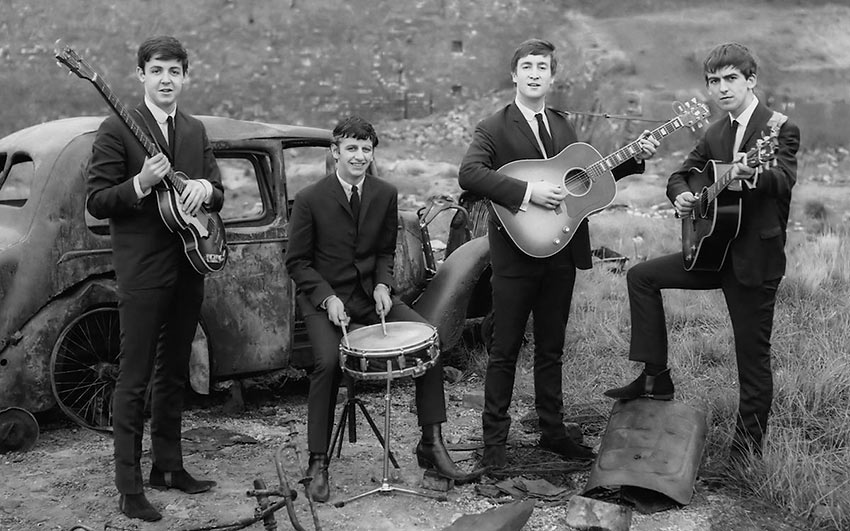
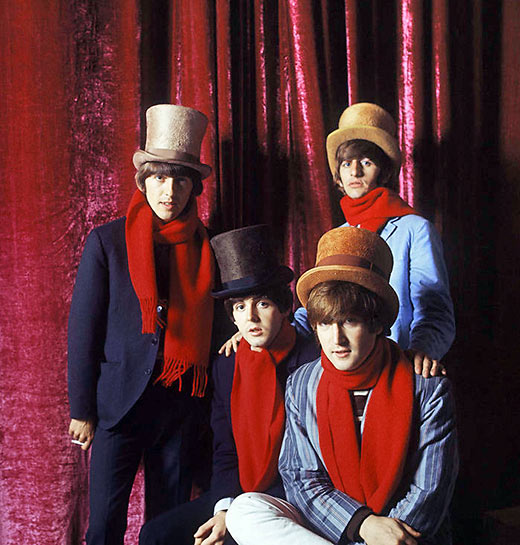
Another important landmark is Beatle manager Brian Epstein’s NEMS Record Store. Legend has it that a youth walked into the store in 1961 asking for anything by the Beatles. Epstein, who prided himself on finding any record a customer requested, became obsessed with locating a recording by this strangely named group of musicians. As additional fans asked about the Beatles, Brian became curious to find out more about this new local sensation. To his surprise, he found they were making one of their regular lunchtime appearances just around the corner from his office. The place was called the Cavern, a catacombed basement club below a row of grimy old warehouses on Mathew Street. The next day he spent his lunch hour at the Cavern, and then offered to manage them. One of his first acts as manager was to have them ditch their scruffy leather boy personae, and putting them in suits. Epstein cleaned the Beatles-up, while Rolling Stones’ manager Andrew Loog Oldman (former press agent for Epstein) dirtied-down the upper middle class Stones – to the chagrin of both Lennon and Mick Jagger.
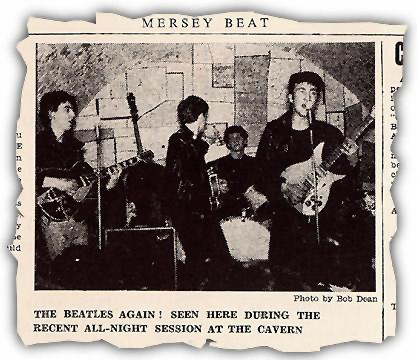
Epstein’s upstairs office soon became the center place for his ever-expanding Beatles enterprises. The office also became a hangout for the band, as once the store closed they would play all the newest records from the States. Liverpool was the big port of England and the city would be the first to get all the latest rock recordings from overseas. This helped the Beatles’ song repertoire at the clubs when they do cover versions of rock and pop songs – which there were few of in 1961.
Sentimental Journey
The coach leaves the city center for the Dingle, a rough and tumble district of row houses where Richard Starkey (Ringo) was born. He was a sickly child, and spent most of his childhood in hospitals with very little formal schooling. However, he possessed a sarcastic Liverpudlian wit which helped him survive the mean streets of the Dingle, despite ill health and short stature. For reasons of safety, the coach does not stop in front of his non-descript row house, but does swing by The Empress Public House, which fans will recognize on the cover of Ringo’s first solo album, “Sentimental Journey.”
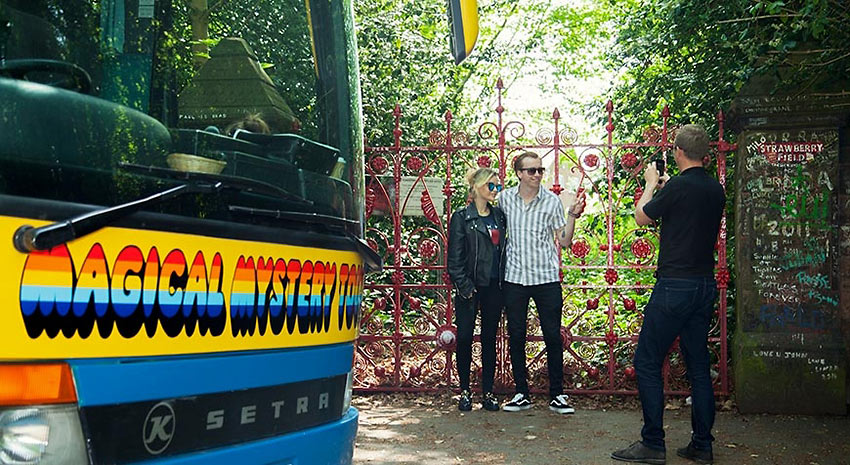
Beneath the Blue Suburban Skies
Truth be told, John, Paul and George were children of the suburbs. Despite the leather coats and Teddy Boy stances, they were not unlike the millions of rock ‘n’ posers of today. John was raised by his Aunt Mimi in an upper middle class home on Menlove Avenue, in Woolton, south Liverpool, after his free-spirited mother Julia dropped him off there to ‘stay for awhile.’ It is the “Julia” he sings of on “The Beatles” double album (aka “The White Album”). John spent more time at this residence than at any other place in his life. It is where he first heard Elvis sing “Hearbreak Hotel” on the radio and where he learned to play the guitar. He wrote the Beatles’ first number one hit, “Please Please Me” in the upstairs bedroom. The property was later purchased by Yoko Ono, who then donated it to the National Trust. The bus stops in the front of the house where Julia, who had returned to live when he was teenager, was hit and killed by a drunk driver while crossing the street. John himself answered the door to the notifying official and even had to go to the morgue to identify her body. He later said that he had lost his mother twice, once when he was a child and again when he was seventeen.
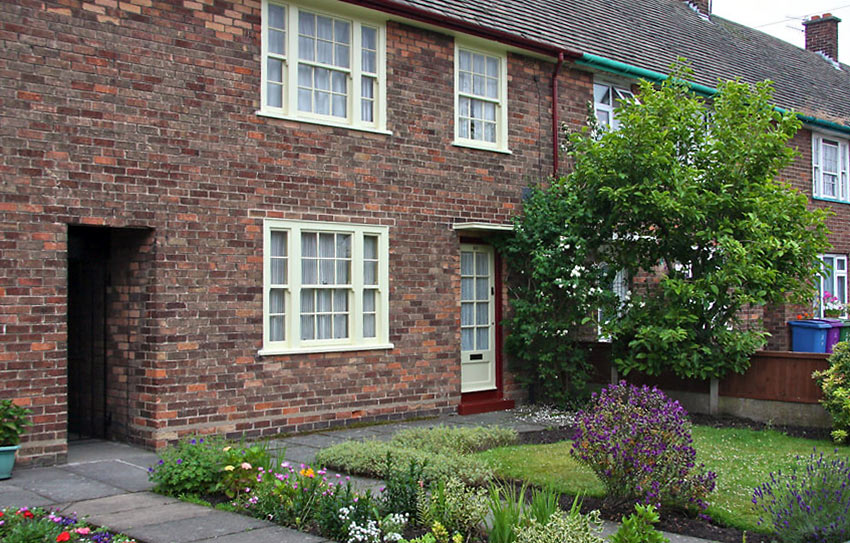
Paul McCartney was also no stranger to tragedy. As the group pauses reflectively outside his small childhood family home, we are informed that his mother died of breast cancer when he was just fourteen. She would later come back to soothe him in his dreams as ‘Mother Mary’ in his haunting ballad, “Let It Be.” Paul and John wrote over 100 songs in the front room of the house. Paul’s father, James, complained that the ‘yeah, yeah, yeah’ in “She Loves You” sounded too informal, and should be changed to ‘yes, yes, yes.’ John replied, “When’d you ever hear anyone from Liverpool say ‘yes?”’
The Long and Winding Road
We pass the school where John still holds the record for the lowest report card in his class, and eventually stops at St. Peter’s Church Hall. This is perhaps the most historic meeting place in rock history.
A friend of John’s took Paul to see John and his Quarry Men skiffle group play a summer show at the church. After their set, John asked Paul, ‘What did ya think of me band?’ Paul replied that John’s guitar was out of tune and that he didn’t know all the song’s lyrics. (Lennon had a secret; he had to pay a neighbor to tune his guitar.) Paul played a word-perfect cover of “Be Bop a Lula” for him, and John was so impressed that he asked him to join the band. Paul requested that his younger friend, George, be allowed to join too, but John was concerned that he was too young and would not attract ‘the birds.’ Eventually John relented after George began to idolize him, following him everywhere he went.
The tour is so detailed that it even stops at the bus stop where Paul and George first met. Paul climbed the stairs to the top of the ‘double-decker’ and found the young George, with guitar case, sitting in the back. A friendship began.
George Harrison was born in a modest ‘two-up and two-down’ home on a small cul-de-sac. The most low key of the lads (his moniker was ‘the quiet Beatle’) his father, Harry, continued his career as a public bus driver even after the mop tops hit fame, often driving a bus load of fans trying to find where George lived. Harry never said a word.
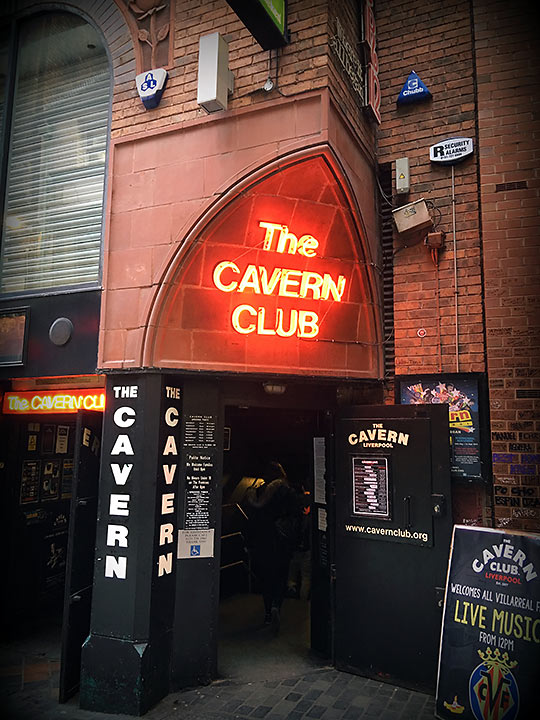
Get Back to Where You Once Belonged
The bus meanders back to the city center and stops at Mathew Street, the sight of the Cavern Club. The area is no longer the delinquent warehouse district where the lads played 292 times from Feb ’61 to Aug 1963. It has now been developed into the Cavern Walks’ shops and offices, which includes the Beatles Shop, which claims to have the largest selection of Beatles merchandise in the world. Believe it or not, the Cavern was demolished in 1973 to provide a construction site for Liverpool’s new underground railway system. It was rebuilt in the exact location as close to the original as possible in the 90s, using bricks saved from the old building. While it may never completely recapture the magic of the original, it’s as close to the real Cavern that you will ever experience.
Get more information on the Magical Mystery Tour and Beatle Week
